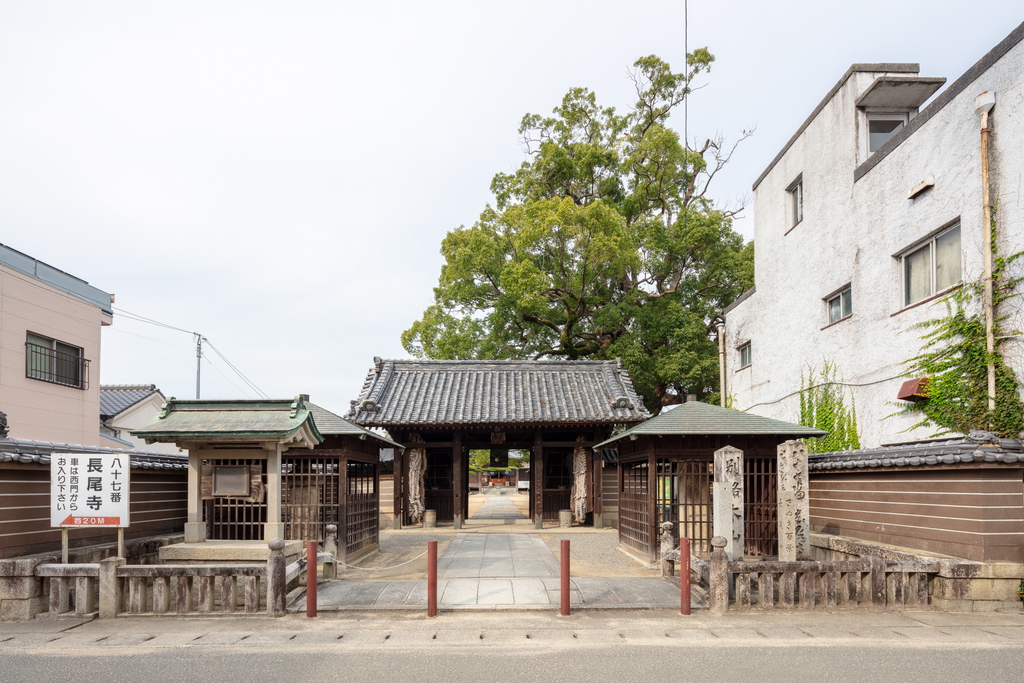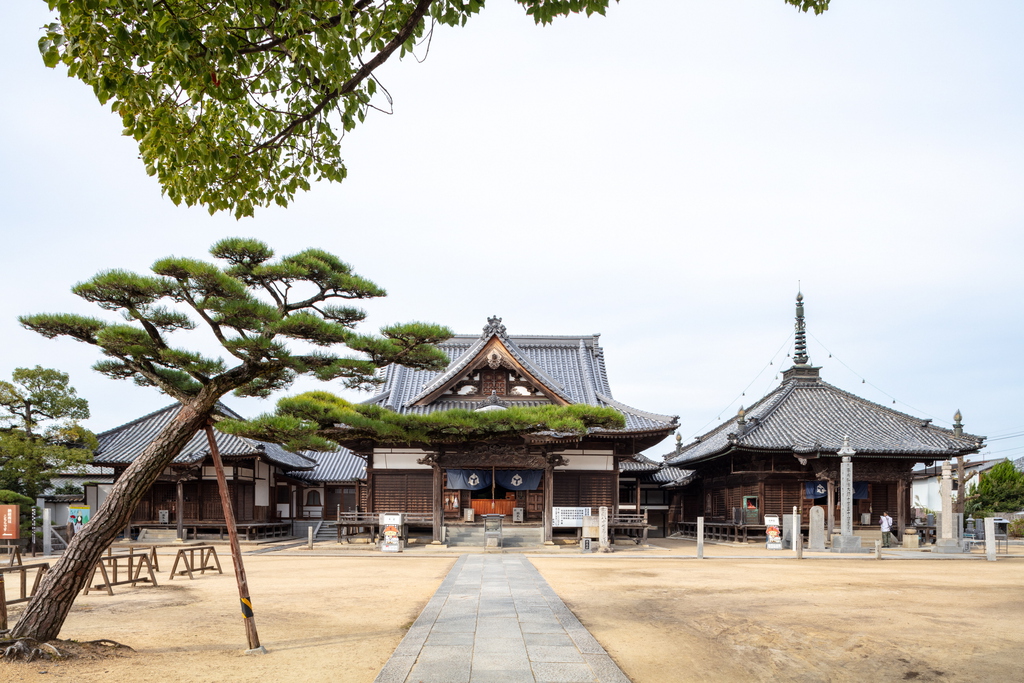
Western KagawaNagaoji Temple
San-mon Gate/Kyodo Memorial Tower

San-mon Gate/Kyodo Memorial Tower

Temple Grounds
Nagaoji, a temple of the Tendai school of Buddhism, is the 87th site on the 88-temple Shikoku Pilgrimage. Its history is believed to have begun in the year 739, when a priest named Gyoki (668–749) visited the site during his journeys around Shikoku. Nagaoji also claims an association with Kukai (774–835), the presumed founder of the Shikoku Pilgrimage, who is said to have conducted rituals here in his youth before traveling to China to study esoteric teachings. After returning to Japan, Kukai visited Nagaoji again and had its grounds expanded. The ancient halls of the temple were lost to fire and war long ago; the current configuration of buildings dates to the Edo period (1603–1867), when Nagaoji received the protection and favor of the daimyo lords of the Takamatsu domain. The Main Gate, in which the temple bell hangs, was built in 1694 and is one of the oldest surviving structures on the grounds.
Other sites of interest include the East Gate, which was moved to its current spot in 1913 from the historic Ritsurin Garden in Takamatsu, and a monument to Lady Shizuka (1165–1211), a tragic figure whose story has been recounted in many epic plays and chronicles. Shizuka was the mistress of Minamoto no Yoshitsune (1159–1189), a warrior renowned for his military prowess, who became a wanted man after falling out with his family. After the lovers parted ways to evade their captors, Shizuka and her mother are said to have visited Nagaoji, where they decided to become Buddhist nuns. The hair Shizuka shaved off to indicate her commitment is believed to be buried under a mound near the monument.
Important cultural property
5-minute walk from Kotoden-Nagao Station
(Nokyojo (Temple Stamp Office)) 7:00 a.m. to 5:00 p.m.